Patrick Gilbert PT, DPT, ATC, CSCS
If you have ever performed a core exercise with a rehab professional I’m sure you have probably heard the phrases, “posterior tilt!” or “flatten your back against the table/floor”. In theory, this is meant to reverse an anterior pelvic tilt. Some health care professionals may assume this is present if the patient has poor abdominal strength.
In reality, this only serves to accentuate the epidemic of the posterior pelvic tilt that many people are constantly in. This can be caused by prolonged sitting or other poor postural positions. In order to correctly explain this, a brief review of anatomy is necessary.
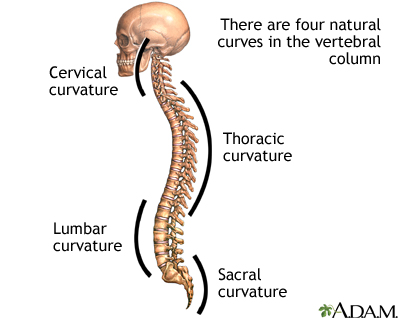
The Difference Between Anterior and Posterior Pelvic Tilt
First: the difference between an anterior and posterior pelvic tilt. In a “neutral” pelvic posture, we have a normal balance of both dynamic and static stabilizers anteriorly and posteriorly. This is due to the natural curves of the spine (Figure 1).
In an anterior pelvic tilt (APT), the pelvis rotates forward (Figure 2). The front of the pelvis will rotate down, while the back portion will rotate up.
In a posterior pelvic tilt (PPT) the opposite occurs. Imagine a cup full of water. With APT the water will spill out the front. With PPT the water will spill out the back. This directly affects the pelvis, but it also has implications on structures above and below the pelvis.
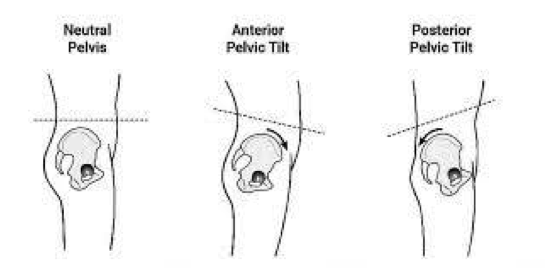
Being in APT will accentuate the natural curvature of the lumbar, thoracic and cervical regions of the spine. Conversely, PPT will “flatten” these three curves.
APT will also place increased tension and length on the hamstring group and the abdominals. This is due to the direct attachment these muscles have to the pelvis. Being in these lengthened positions takes them out of their ideal length-tension position. This means they are unable to create maximal strength and power when asked to do so. This will only serve to worsen the APT.
Being in PPT may actually be worse for our spine than APT. This is especially true of our lumbar spine, mainly due to its proximity to the pelvis. In order to understand this, we need to take a closer look at intervertebral discs and facet joints.
Being in anterior pelvic tilt will accentuate the natural curvature of the lumbar, thoracic and cervical regions of the spine
Tweet
Pelvic Tilt and Intervertebral Discs
We have intervertebral discs between each of our vertebrae. The outer portion is made of very strong connective tissue. The inner portion is filled with a water-like gel substance. These discs are pliable and shift to accommodate spinal motion (Figure 3).
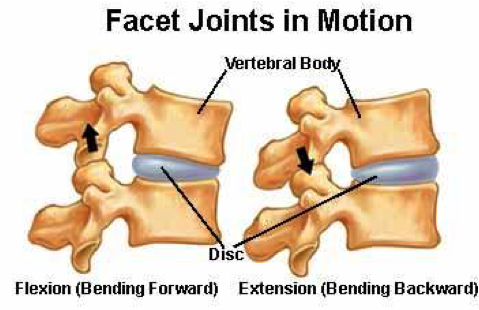
While the outer ring is very strong, it can be subjected to damage and tearing with repetitive or excessive loading. We also need to keep in mind that our nerve roots come from our spinal cord, which is housed within this spinal canal (Figure 4).
These roots then exit the spine through the intervertebral foramen (holes behind the disc on either side of the spine). When we have a neutral pelvis, these openings allow adequate space for the nerve roots to pass through without becoming pinched or irritated.
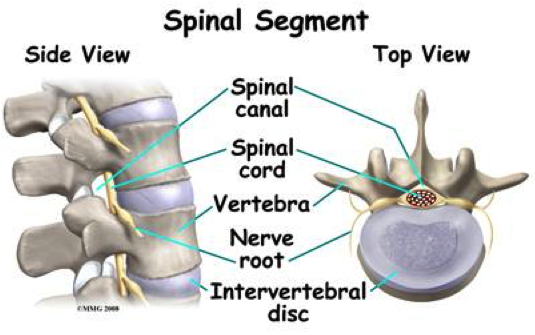
When we are in APT, these facet joints “close down”. This places more pressure on the back of the vertebral body and disc, which shifts the disc forward. There is a very strong and broad ligament in the front of the vertebral body called the anterior longitudinal ligament (ALL). This ligament prevents the disc from shifting or protruding too far forward. With this said, extension is a relatively safe position for our lumbar spine.
The exact opposite occurs while in PPT, where the facet joints “open”. This increases the space of the intervertebral foramen. However, this also places more pressure on the front of the vertebral body and disc, which pushes the disc backward.
Another ligament runs along the back of the vertebral bodies, known as the posterior longitudinal ligament (PLL). This has the same job as the ALL but posteriorly. It is also more narrow than its’ anterior counterpart. This ligament does a good job of keeping potential disc protrusions away from the spinal cord. However, it tends to push them towards the sides and the nerve roots.
If we are constantly in a position of spinal flexion (secondary to PPT), this pre-disposes our discs to shift backward and to the sides. This means it may take less force to cause an injury.
What Does it all Mean?
Long story short, being in APT (within reason!) can be protective for our lumbar spine. Being stuck (or training) in PPT may predispose our lumbar spine to potential injury.
Instead of attempting to force ourselves out of our natural posture by reducing the normal curvatures of the spine, why not use the natural curves to our advantage? Humans are built this way for a reason, so no need to mess with our skeletal alignment.
Instead of thinking about “flattening your spine” during a movement or exercise, think about maintaining tension through your core. Maintain the curve of your spine rather than trying to alter it. This can be beneficial for you in multiple ways.
First, this will help to strengthen your core. Core strength plays a key role in preventing potential injuries to your abdominals and obliques. Training under tension and creating “stiffness” will also lock in your spinal curves and not allow them to be disrupted by outside forces. Maintaining tension throughout movements will not allow the spine to flex, extend, bend or rotate. This will assist the body and its’ ability to fight off potential injuries to the spine.
Next time you hear “tilt that pelvis back!”, consider asking why and see what kind of response you get. Then maybe refer them to this post…

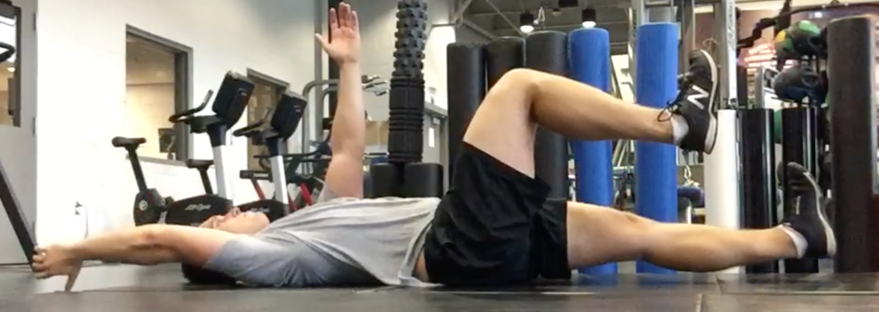
3 thoughts on “Stop Cueing the Posterior Pelvic Tilt”